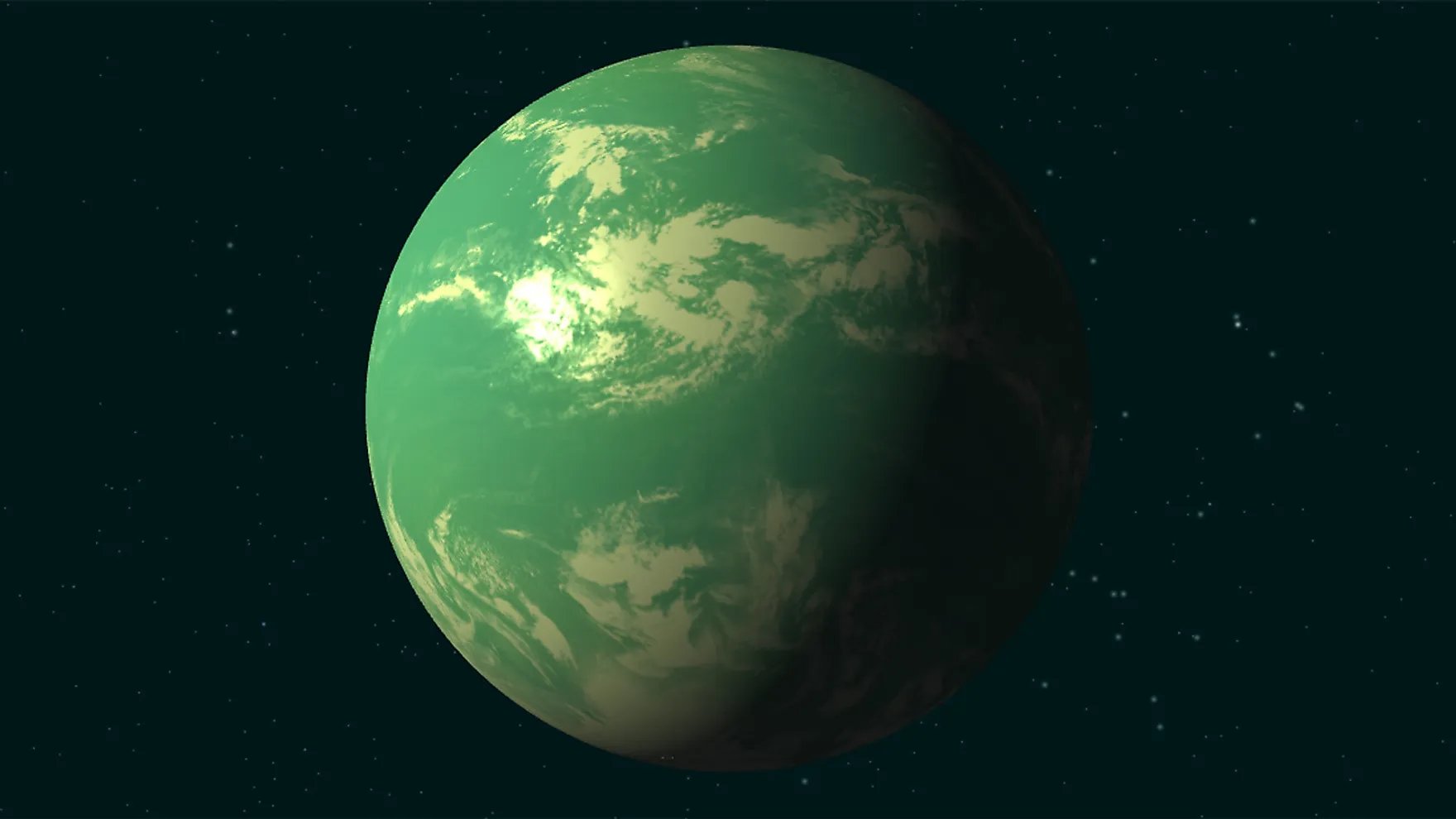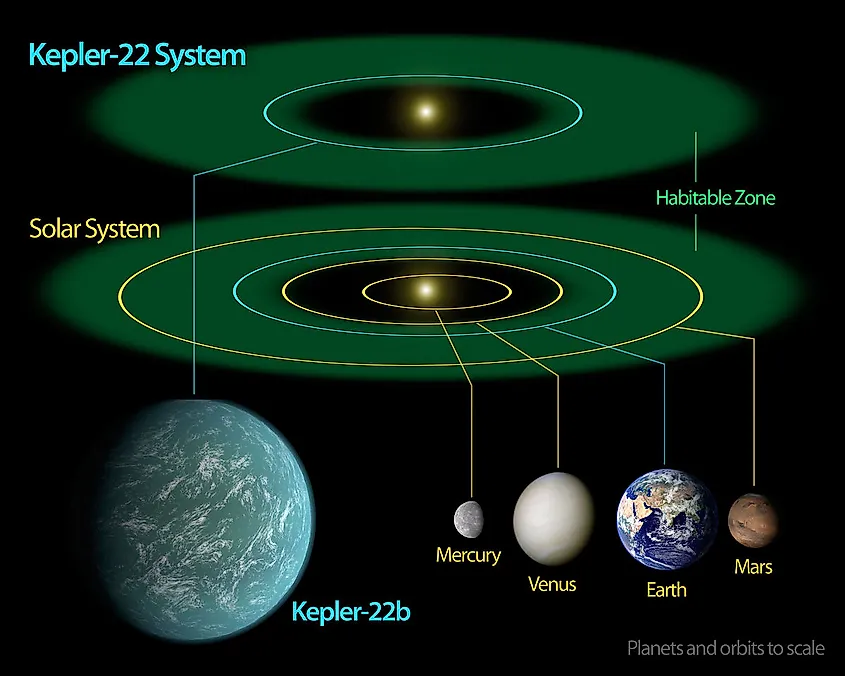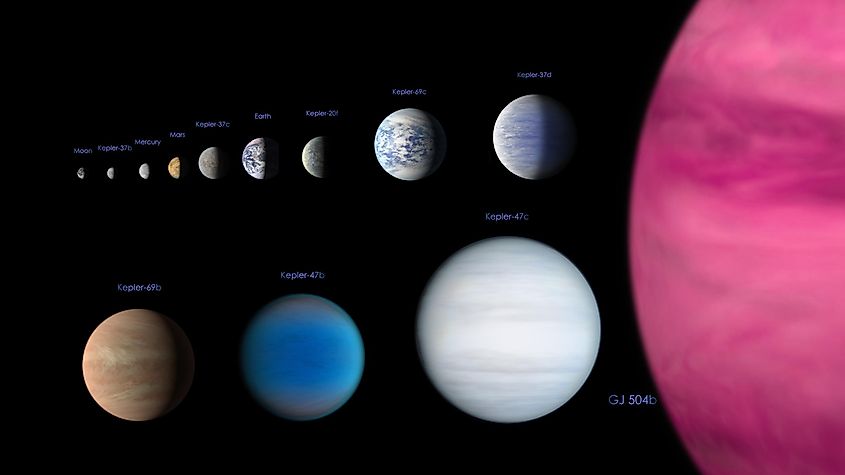
Kepler-22b
Ever since discovering the first exoplanet in 1996, the science of planet discovery has exploded. In less than 30 years of research, astronomers have confirmed the existence of over 3,000 exoplanets, with hundreds more awaiting confirmation. The vast majority of these exoplanets were discovered using the Kepler Space Telescope. Kepler was launched by NASA in 2009 and remained in operation until 2018. Kepler’s primary mission was to discover potentially Earth-like worlds around other stars, and in 2011, astronomers announced the discovery of the first potentially Earth-like world around another star. To detect distant worlds, Kepler observes a star and waits to see if any planets pass in front of the star.
As a planet passes in front of its star, a very small amount of the star’s light is blocked by the planet, and astronomers can use this to determine the existence of a planet. It is called the transit method, and it can be used to determine the size of a planet, its orbital period, orbital distance, and even the existence of an atmosphere. In 2011, Kepler confirmed the existence of an exoplanet in orbit around the sun-like star Kepler 22, a star located 600 light-years away in the constellation Cygnus. The exoplanet was designated Kepler 22b, and it turned out to be the first planet ever to be discovered orbiting in its star’s habitable zone.
Characteristics Of Kepler 22b

Kepler 22b orbits within the estimated area of its star’s habitable zone. If certain conditions are met, such as an Earth-like atmosphere, liquid water could theoretically exist on the surface of Kepler 22b. Although Kepler 22b orbits in its star’s habitable zone, that does not guarantee that the planet is habitable; it simply means that given the right conditions, habitability is possible. Kepler 22b is a larger planet than Earth, having an estimated radius 2.4 times larger than Earth’s. The mass of Kepler 22b remains a mystery as the transit method cannot determine the mass of a planet. Estimates vary on the exact mass of Kepler 22b, although it is likely significantly more massive than Earth. The mass of Kepler 22b is likely between the masses of Earth and Neptune, making it either a super-Earth or a mini-Neptune.
Kepler 22b orbits its star at a distance that is 15% closer than the Earth is to the sun. Thus, Kepler 22b completes one orbit of its star every 290 Earth days. Fortunately, the host star of Kepler 22b is about 25% dimmer than our sun, and so the amount of heat that Kepler 22b receives is lower than what the Earth would receive if it were 15% closer to the sun. If Kepler 22b has an atmosphere similar to Earth’s with a moderate greenhouse effect, it will experience a moderate surface temperature of 22 degrees Celsius. However, it is also possible that Kepler 22b has a drastically different atmosphere than Earth’s. Without an atmosphere, Kepler 22b would have a minus 18 degrees Celsius surface temperature. If it has an atmosphere like Venus, it will experience a surface temperature of 460 degrees Celsius.
Given what is currently known about Kepler 22b, scientists believe that the planet is likely an ocean planet. The high surface gravity would make it difficult for large land areas to form, and its location from its star would allow vast amounts of liquid water to form on the surface. Its higher mass may also suggest that Kepler 22b has a reasonably thick atmosphere. Even with a dense atmosphere and a lack of surface features, Kepler 22b could still be home to life in its vast ocean.
Future Observations

Exoplanets are exceptionally hard to study. Not only are they very far away, but they are also extremely dim in comparison to their host star. However, as telescopes become more powerful, it may be possible to observe planets like Kepler 22b directly. The James Webb Space Telescope (JWST), launched in 2021, has been equipped with the required technology to observe distant exoplanets directly. Kepler 22b is a potential exoplanet that JWST may observe in the near future. JWST should be able to determine the actual mass of the planet and the existence and composition of an atmosphere.
| Radius | 2.4 Earth radii |
|---|---|
|
Mass |
Unknown, but likely between the mass of Earth and Neptune |
|
Length of day |
Unknown |
|
Length of year |
290 Earth days |
|
Composition |
Likely an ocean world with a rocky core and a dense atmosphere |
|
Discovery date |
Existence was confirmed on December 5, 2011 |
|
Discovered by |
NASA’s Kepler Space Telescope |











